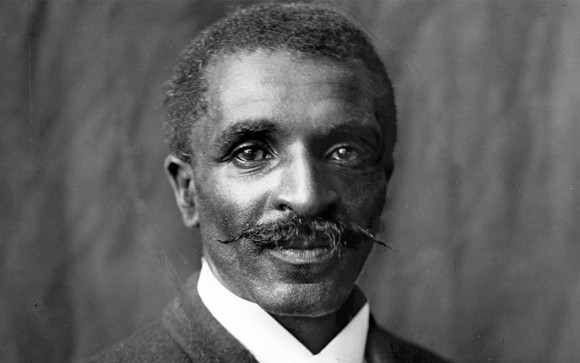
Born in Missouri around 1864 during the years of Civil War (the exact date and year in which he was born not being known), George Washington Carver was a son of an enslaved couple, Mary and Giles. Only a week after his birth, invaders from Arkansas, a neighboring state, kidnapped him along with his sister and mother. They were sold in Kentucky. However, George was found and sent back to Missouri.
With the end of slavery in Missouri post the Civil War, Moses Carver, the owner of the slaves, kept George and his brother at his home, raising and educating them. With no school accepting black pupils at the time, Moses himself taught George how to read and write.
George struggled a lot to receive education, travelling miles to reach a school for black students. He then went on to receive a diploma from the Minneapolis High School in Kansas. Later, he was accepted in Highland College in Kansas but once the college realized about George’s race, his acceptance was reversed. Thus he resorted to conducting biological experiments on his own.
While science was his primary area of interest, George was also fond of arts. He started studying music and art at Simpson College, Iowa, in 1890 and later moved to Ames to study botany at the Iowa State College of Agriculture where he was the first black student. After completing his bachelors and masters degree from the college, he gained popularity as an excellent botanist.
He then started his journey as a teacher and researcher. Booker T. Washington, the principal of the Tuskegee Institute built for African Americans, hired him to head the institute’s agricultural department in 1896. Under the guidance of Carver, Tuskegee’s agricultural department helped to stabilize many people’s livelihoods by developing new crops and introducing a diversified crop range that could bare harsh weather conditions.
At Tuskegee, Carver’s work as a researcher on plant biology brought him into the limelight. His work focused on finding out how crops such as peanuts, soybeans and sweet potatoes can be used as raw materials for many other products. His inventions included plastics, dyes and paints amongst others. His speech in 1920 to the Peanut Growers Association highlighting the importance of peanuts as commercial crops led to a tariff being introduced on imported peanuts. He rose to fame for his work as a scientific expert and achieved worldwide popularity in both professional and political groups.
George Washington Carver’s work was admired by President Roosevelt and Carver gave advice to the United States of America on matters pertaining to US agriculture. He was also honored membership of the British Royal Society of Arts in 1916. For ten years following 1923, Carver worked for Interracial Cooperation by visiting white Southern colleges.
While Carver was surely involved in government funded projects and research work, he tried his best to isolate himself from the political activities going on. Nevertheless, Carver did manage to greatly enhance the lives of many farming families and was particularly famous amongst African-Americans and Anglo-Americans. Having left a strong presence on many people, Carver died by falling from his house’s staircase on January 5, 1943.
However, George Washington Carver left this world as a legacy and several monuments have been made after him including one at Diamond Missouri where he was born. Several schools have been named after him and in 1948 and 1998, Carver’s name also appeared on U.S. commemorative postal stamps. Around more than 7 decades after his death, his name largely remains known as one of the most intellectuals African Americans to have graced the world.
